Have you ever wondered if lock picking can damage locks? Once in the beginning, as a novice lock picker, I was eager to test my skills on an old storage locker I had in my garage.
However, my excitement quickly turned to frustration as I struggled to pick the lock. In a moment of careless force, I ended up breaking my pick inside the lock and causing the key to become stuck. I had to call in a locksmith to fix the lock, which left me wondering: does lock picking really damage locks?

In this article, we’ll explore the answer to this question and the potential consequences of lock picking on your locks.
Contents
- 1 Does Lock Picking Damage Locks?
- 2 The Effects of Lock Picking on Locks
- 3 Factors That Affect the Damaging Of a Lock
- 4 5 Ways How Your Lock May Get Damaged
- 5 Personal Examples of the Consequences of Lock Picking My Locks
- 6 How to Protect Your Locks from the Consequences of Lock Picking
- 7 Preventing Lock Damage during Lock Picking and Tips to Avoid Lock Damage
- 8 Repairing Locks after Lock Picking
- 9 Conclusion
- 10 FAQs About Lock Picking and Lock Damage
- 11 Resources
Does Lock Picking Damage Locks?
Before we dive deeply into the question of whether or not lock picking damages locks, we will briefly go through the process of lock picking, which involves using specialized tools to manipulate the pins inside the lock mechanism. When the pins are set in the correct position, the lock will turn, and the mechanism will open.
Now let’s inspect the famous question in the mind of most lock picking explorers i.e. does lock picking damage locks? The answer is both yes and no. The truth is that lock picking can damage locks, but it doesn’t always.
The Effects of Lock Picking on Locks
When a lock is picked, it undergoes stress and strain that it wasn’t designed to withstand. Over time, this stress can cause the lock to wear down, which can lead to damage and even failure.
If the lock is of high quality and in good condition, it is unlikely that lock picking will cause any damage. However, if the lock is old, worn, or of low quality, it is more likely to sustain damage during the lock picking process.
It’s important to note that even if lock picking doesn’t cause any visible damage, it can still weaken the lock mechanism over time. If you are picking your own lock, it’s essential to be gentle and avoid applying too much pressure, which can cause damage.
Lock picking requires skill and patience, as well as the right tools. If you do not have the proper tools or training, you could end up damaging the lock, which could result in costly repairs.
The Risks Involved In Lock Picking
There are also risks involved in lock picking, including the potential for broken picks or damaged locks. Additionally, some locks may be more susceptible to damage from lock picking than others, depending on the type of lock and its age and condition.
Factors That Affect the Damaging Of a Lock
Factors that affect damage to a lock are discussed below:
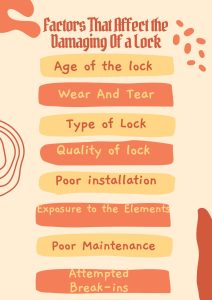
1. Age of the lock
The age of the lock can be a significant factor in determining how susceptible it is to damage during lock picking. Generally, the older a lock is, the more likely it is to sustain damage during picking.

This is because, over time, the internal mechanisms of a lock can become worn or weakened. For example, the pins inside the lock may become corroded or stuck, making them more difficult to move. This can make it harder to pick the lock, and also increase the risk of damage to the lock itself.
2. Wear And Tear
Older locks may be made of materials that are more susceptible to wear and tear, such as softer metals or plastics. This can make them more prone to damage from the tools used in lock picking.
3. Quality of the Lock
It’s important to note that even newer locks can be susceptible to damage during lock picking if they are of low quality or poorly made. Conversely, high-quality locks that are well-maintained can be less likely to sustain damage during lock picking, even if they are older.
4. Type of Lock
The type of lock is another factor that can affect the potential for damage during lock picking. Different types of locks have different internal mechanisms, which can make them more or less susceptible to damage.
For example, pin-tumbler locks, which are the most common type of lock, have a series of pins that must be aligned in order for the lock to open. When a lock picker applies pressure to the pins, it can cause them to bind or even break, which can result in damage to the lock.
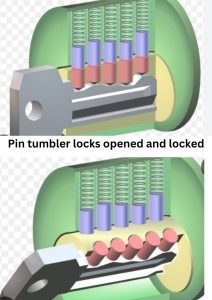
Similarly, disc tumbler locks, which use rotating discs instead of pins, can be damaged if the discs are forced out of alignment during the picking process.
On the other hand, locks with more advanced mechanisms, such as electronic locks or magnetic locks, may be less likely to sustain damage during lock picking. This is because these locks are typically designed to resist picking and are often made with more durable materials.
However, it’s important to note that even high-quality locks can be damaged if they are not picked correctly. Applying too much pressure or using the wrong tools can cause damage to any type of lock, regardless of its design or materials.
One more aspect of The Four Types of Lock by Deviant Ollam is a must to go through.
5. Poor Installation
The installation of a lock can also play a role in how susceptible it is to damage during lock picking. If a lock is poorly installed, it may be easier for a picker to bypass the lock without causing any visible damage.
For example, if a deadbolt is not installed properly, it may not extend far enough into the door frame to provide adequate security. In this case, a picker may be able to use a bypass tool to manipulate the lock without causing any damage.
Similarly, if a lock is installed on a weak or damaged door, it may be easier for a picker to gain entry without causing damage to the lock itself. The weak point in the door may provide a vulnerable entry point, allowing the picker to bypass the lock entirely.
However, if a lock is properly installed and the door is strong and secure, a picker may need to apply more force to the lock in order to bypass it. This can increase the likelihood of visible damage to the lock, such as broken pins or bent mechanisms.
Overall, the quality of the lock installation can play a role in determining how likely a lock is to sustain damage during lock picking. If the lock is installed properly and on a strong door, it may be more difficult for a picker to bypass the lock without causing visible damage. However, if the lock is poorly installed or installed on a weak door, a picker may be able to bypass the lock without causing any damage.
6. Exposure to the Elements
Exposure to the elements can also affect how a lock responds to lock picking attempts. Locks that are exposed to harsh weather conditions, such as rain, snow, or extreme temperatures, may be more susceptible to damage during lock picking.
For example, if a lock is exposed to moisture, the internal components of the lock may become rusted or corroded over time. This can weaken the lock mechanism, making it easier for a picker to bypass the lock without causing visible damage.
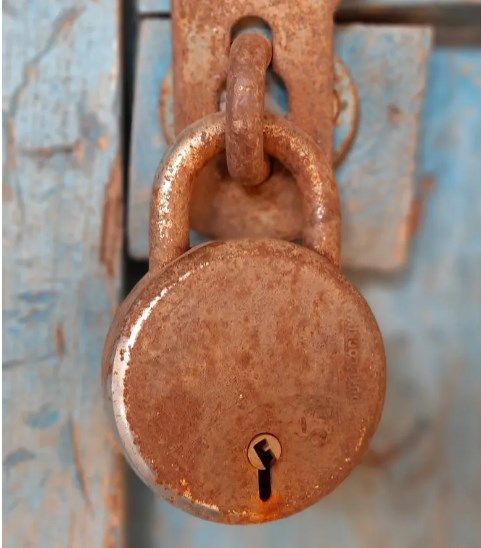
Similarly, if a lock is exposed to extreme temperatures, the internal components of the lock may expand or contract, making it more difficult for the lock to function properly. This can cause the lock to become more vulnerable to lock picking attempts, as the internal components may not align properly or may be weakened by the temperature changes.
In addition, locks that are exposed to sunlight may become brittle or discolored over time. This can affect the strength and durability of the lock, making it more susceptible to damage during lock picking.
Overall, exposure to the elements can have a significant impact on the effectiveness of a lock and its ability to withstand lock picking attempts. If a lock is exposed to harsh weather conditions or extreme temperatures, it may be more vulnerable to damage during lock picking. Regular maintenance and protection from the elements can help to minimize the risk of damage and ensure that the lock remains secure.
7. Poor Maintenance
Poor maintenance can also contribute to the damage that a lock may sustain during lock picking attempts. If a lock is not regularly maintained or lubricated, the internal components can become dirty, corroded, or rusted over time.
For example, if a lock is not lubricated, the internal pins and tumblers can become stuck or jammed, making it more difficult to pick the lock. This can also cause excessive pressure to be applied to the lock mechanism during lock picking attempts, which can lead to visible damage or even breakage.
Similarly, if a lock is not regularly cleaned or inspected, the internal components can become worn or damaged over time. This can weaken the lock mechanism and make it more vulnerable to lock picking attempts, as the internal components may not function properly.
Overall, poor maintenance can contribute to the damage that a lock may sustain during lock picking attempts. Regular maintenance, lubrication, and cleaning can help to ensure that the lock remains in good working condition and is less susceptible to damage during lock picking.
8. Attempted Break-ins
Attempted breaks, such as forced entry or drilling, can damage a lock and make it more vulnerable to lock picking. This damage can weaken the lock mechanism, making it easier for someone to manipulate using lock picking tools.
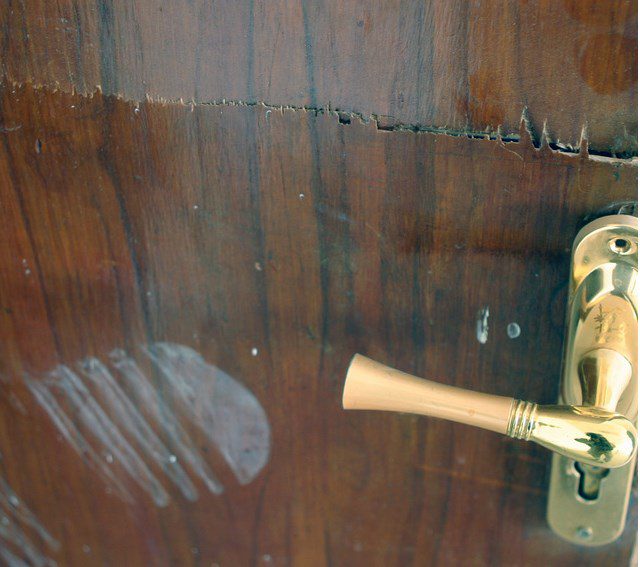
Additionally, attempted breaks may indicate a low-quality or poorly installed lock, which can make it more vulnerable to both forced entry and lock picking. Regular maintenance and inspection can help prevent damage from attempted breaks and make it harder for someone to pick your lock.
Does Lockpicking damage locks should be a more clear statement by now because the above factors show that lock picking alone is not responsible for the damage but the related other factors also play a major role in bringing the damaging condition of the locks.
5 Ways How Your Lock May Get Damaged
5 ways how your lock may get damaged are discussed below:

1. The Lock Springs Get Damaged
Lock picking is a delicate process that can cause damage to the internal springs if not done carefully. The wrong pressure or torque applied to the lock can bend, break or damage the springs, rendering the lock insecure and requiring replacement.
It’s advisable to let professionals handle the task, even if you have the right tools. Inexperienced hands applying too much pressure while attempting to pick a lock can lead to serious damage, necessitating replacement of the lock and potential loss or theft of items inside.
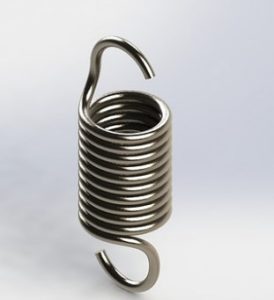
It’s crucial to take into account the type of lock you’re dealing with, as different locks require different techniques for picking, and not following the right method can result in irreparable damage.
Lock springs are meant to withstand the gentle force of a key lifting the pins, but lock picking can still cause damage to them.
Raking, a forceful and erratic lock picking technique, and oversetting pins can stress the springs past their limit, leading to deformation or breakage. This can cause issues with the lock’s functionality and the use of the key.
Older locks with rust, corrosion, and build-up are especially susceptible to these problems. Therefore, it is essential to use proper techniques and be cautious while lock picking to prevent damage to the lock’s springs.
2. Wear And Tear on the Lock
Lock picking can gradually wear out a lock by creating small scratches and imperfections in the pins and locking mechanism each time the pick is inserted.
This can compromise the security of the lock over time. Applying too much force while picking can also damage the pins and the locking mechanism, rendering the lock unusable.
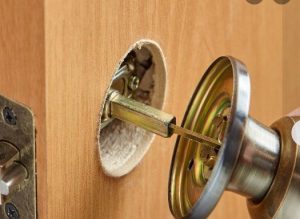
Older locks are particularly susceptible to damage during the picking process due to their less robust design.
Lock picking tools made of hard steel can cause damage to the internal components of a lock, which are typically made of softer metals like brass.
When using a tool like a rake, the beveled tips of the key pins can become worn down, causing the key to become difficult to use. Even if the lock is not completely destroyed, continued attempts to use the damaged key can lead to frustration and the need for a replacement lock.
3. Damage to Lock Picking Tool
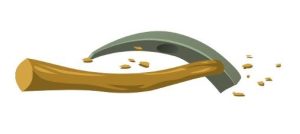
If you’re not careful with your lock-picking tools, you might end up damaging them. When you insert the tool into the lock and start maneuvering it around, the metal parts of the lock can become rough and sharp, causing the tool to become dull or damaged.
4. Special Lock Features
Did you know that there are many different types of locks out there, and not all of them are the same? Well, some locks can be damaged permanently while picking if you don’t know what you’re doing.
Take, for example, Master Locks of famous companies. They are great for practicing spool and tension training. But, if you look closely at the front of most of such locks, you’ll notice two plastic notches in front of the keyway. These notches are there to prevent the key from rotating more than 90 degrees.
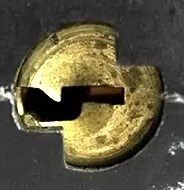
Now, if you’re picking this lock and you happen to rotate the core past these notches, the pins will fall from the plug into the casing of the lock. This can totally ruin the lock and turn it into a “rattler,” which is not something you want to happen. So, make sure you know your lock’s design before you start picking it!
5. Damage to the Electronic System of a Smart Lock
Picking a smart lock can damage the electronic system if not done correctly. Using non-destructive methods and tools specifically designed for smart locks can reduce the risk of damage.

Be mindful of the amount of pressure applied, as too much pressure can cause significant damage and expensive repairs or replacement may be necessary.
Personal Examples of the Consequences of Lock Picking My Locks
My earlier experience as a lock picker took relatively lesser time for me to know answer to my query “Does Lock Picking Damage Locks?” Following are some examples of my personal experiences of the potential consequences of lock picking. All these examples belong to the learning span of my lock picking career.
-
Lock Damage
I once tried to pick the lock on my front door, but I ended up causing visible damage to the lock mechanism. The lock became difficult to operate, and I had to call a locksmith to repair the damage.
-
Keyway Deformation
I have a padlock that I use for securing my garden shed. I tried to pick the lock on this padlock using a DIY pick set, but I ended up causing deformation to the keyway, making it difficult to use a key to open the lock.
-
Spring Breakage
My friend tried to pick the lock on his mailbox, but he ended up breaking the internal spring mechanism of the lock, making it impossible to unlock the mailbox using a key.
-
Lock Jamming
Another friend tried to pick the lock on his car trunk, but he ended up jamming the lock mechanism, making it impossible to open the trunk even with the key.
-
Lock Wear and Tear
I have a file cabinet that I sometimes use for storing important documents. I tried to pick the lock on this cabinet, but I noticed that over time, the lock mechanism became weaker and less reliable, making it more prone to wear and tear.
How to Protect Your Locks from the Consequences of Lock Picking
Does lockpicking break the lock. Yes it can. So here are my personal tips for protecting your locks from the consequences of lock picking:
- Firstly, you should invest in a good quality lock pick set that matches your skill level. However, if you’re just starting out, household items like bobby pins and paperclips might work as well.
- Next, do your research and watch tutorials or read up on techniques to familiarize yourself with the different parts of the lock.
- Finally, practice is key. Start with an old padlock and be patient and steady with your hand. Don’t rush or force anything, as it takes time and practice to get it right.
Preventing Lock Damage during Lock Picking and Tips to Avoid Lock Damage
Lock picking can be a delicate process that requires skill and finesse to minimize the potential for damage to your locks. Here are some tips for preventing lock damage during lock picking:
1. Use the right tools
One of the easiest ways to minimize the potential for lock damage is to use the right tools for the job. There are many different types of lock picking tools, and each one is designed for a specific purpose. Using the wrong tool can cause unnecessary damage to your lock.
2. Avoid excessive force
Lock picking requires a delicate touch, and excessive force can cause damage to your lock. Instead, use a gentle touch and feel for the feedback from the lock to determine the correct amount of pressure.
3. Practice good technique
Proper technique is essential for minimizing the potential for lock damage during lock picking. This includes using the correct angle and applying pressure in the right places.
4. Choose the right and high-quality lock
Not all locks are created equal, and some are more resistant to lock picking than others. Choosing a high-quality lock can help minimize the potential for damage.
5. Proper installation
Make sure your locks are installed correctly to avoid damaging the lock or the door or window it is installed in.
6. Regular maintenance
Regular maintenance can help keep your locks in good condition and prevent damage.
7. Avoid picking your own locks
If you are not a trained locksmith, it’s best to avoid picking your own locks to avoid causing damage.
Repairing Locks after Lock Picking
Firstly determine if a lock has been damaged and then take the required steps to repair the damaged lock.
How to Determine If a Lock Has Been Damaged
-
The key won’t turn
Sign of damaged lock, caused by bent key or damaged pins inside the lock.
-
Difficulty turning
The key turns but the lock is hard to open or close, caused by worn or damaged parts.
-
Unusual sounds or movements
Strange noises or movements when using the lock indicate internal damage, like grinding or scraping.
-
Visible damage
Scratches, dents or other physical damage on the lock suggests attempted forced entry or external damage.
Steps for Repairing a Damaged Lock
Even with the best intentions, lock picking can sometimes result in damage to your lock. Here are some steps for repairing a damaged lock:
1. Assess the damage
The first step in repairing a damaged lock is to assess the extent of the damage. This will help determine the best course of action.
2. Determine the cause of the damage
Understanding the cause of the damage can help prevent future damage from occurring. If the damage was caused by using the wrong tool or excessive force, adjusting your technique can help prevent future damage.
3. Consider the age and condition of the lock
The age and condition of the lock can impact the best way to repair it. If the lock is old and worn, it may be more cost-effective to replace it rather than repair it.
4. Seek professional assistance
Depending on the extent of the damage, it may be best to seek professional assistance from a locksmith or if you insist on repairing it yourself then do go through resource videos available on different platforms online.
When to Replace a Lock Instead Of Repairing It
A lock should be replaced instead of repaired if it has sustained severe damage or has worn out over time beyond repair.
Additionally, if the lock is outdated or does not meet current safety standards, it may be best to replace it with a more modern and secure option.
Finally, if you have lost the key to a lock and cannot access it, replacing the lock may be the most practical solution.
Conclusion
In conclusion, the answer to the question “Does lock picking damage locks?” or “Can lockpicking damage a lock”, is both yes and no. While it is possible to pick a lock without causing any damage, it is also possible to cause damage, especially if the lock is old or of low quality. If you are not a trained locksmith, it is best to avoid picking your own locks to avoid causing damage.
If you do need to pick a lock, it’s essential to be gentle and avoid applying too much pressure, which can cause damage. Can picking a lock damage it? Yes but by following the tips outlined in this article, you can help prevent lock damage and keep your locks in good condition.
FAQs About Lock Picking and Lock Damage
Can lock picking damage locks?
Yes, lock picking can damage locks although it is possible to pick a lock without causing any damage, it is also possible to cause damage, especially if the lock is old or of low quality.
How can you tell if a lock has been damaged by lock picking?
If a lock has been damaged by lock picking, it may be difficult to turn the key, or the lock may not work at all.
Does lock picking break the lock?
Yes, Lock picking can potentially break a lock if not done properly
How do you pick a lock without damaging it?
It is possible to pick a lock without causing damage using non-destructive techniques.
Do lock pick guns damage locks?
Lock pick guns can cause damage if used improperly.
Can you use a lock after it has been picked?
A lock can generally still be used after being picked.
Resources
- Lockpicking Forensics by datagram
- Locks: Centuries of Security
- The Four Types of Lock by Deviant Ollam
- Introduction to Locks and Keys
- TYPES OF LOCKS.
- Lock and Key Systems
- USER’S GUIDE ON CONTROLLING LOCKS, KEYS AND ACCESS CARDS
- 5 Lessons Lock Picking Can Teach You About Cyber Security
